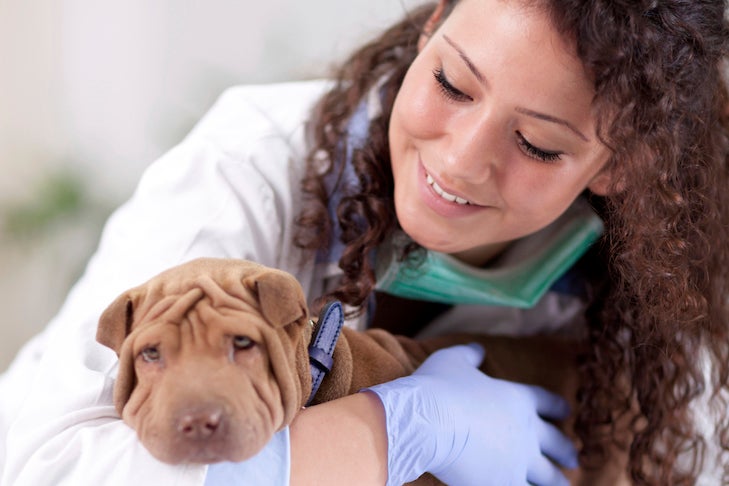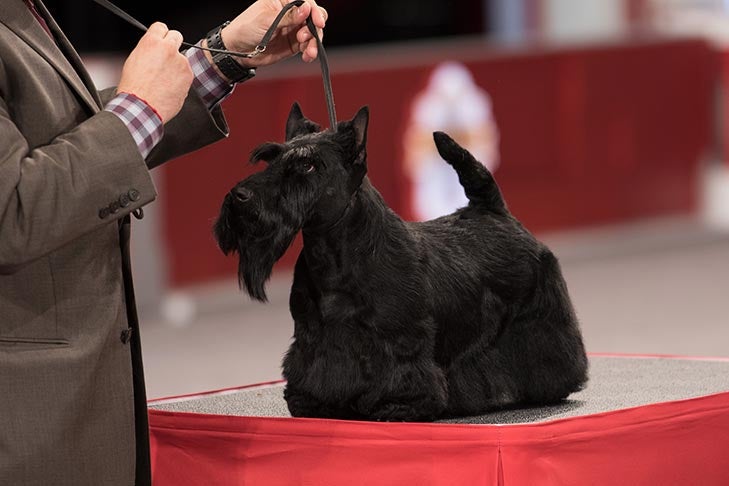
People spay or neuter their dogs for many reasons, like preventing unplanned litters. Research has shown that a gonadectomy (removing the testes in males and ovaries in females) removes any chance of testicular or ovarian cancer as well as pyometra (infection of the uterus). It also possibly lowers the chance of breast cancer in dogs, as well as the chance of some hernia and prostate problems.
When you’re thinking of having your dog spayed or neutered, a gonadectomy is likely what comes to mind. But are there other options? In recent years, some hormone-sparing surgical alternatives to gonadectomies have become available. What are they, and could one of these surgeries be right for your dog? Talk to your vet about whether spaying or neutering your dog (and, if so, at what age) is the right decision for your dog.
Problems With Gonadectomies for Dogs
Studies have shown that a gonadectomy can be associated with an increased chance of select diseases in some dogs. These conditions include obesity, urinary incontinence, hip dysplasia, cruciate ligament rupture, immune-mediated diseases, aggressive or fearful behavior, and cancers like hemangiosarcoma. Most of these increased chances are small but statistically significant, and several seem to affect larger dogs or certain breeds much more than others.
It’s currently estimated that about 85% of dogs in the United States are sterilized. Dogs are usually sterilized by surgically removing the gonads (the testes in males and ovaries in females).
Alternative Surgical Methods to Spay and Neuter
Alternative methods of surgical birth control are becoming more mainstream. Instead of being neutered, a male dog can have a vasectomy. Instead of a spay, a female dog can have a hysterectomy, also called an ovary-sparing spay (OSS).

Sterilization Options Instead of Neutering
Vasectomies for Dogs
A vasectomy in dogs is much like it is in people. The testicles remain, but the sperm’s route is blocked. Small tubes, called vas deferens, are cut or sometimes clamped. These tubes allow sperm to travel from each testicle to the urethra during ejaculation. Cutting or clamping them prevents sperm from getting through. It’s a simple procedure but must be performed under anesthesia, and it’s more technical than castration. It isn’t typically taught in veterinary schools, so not many veterinarians have experience with it. Expect to pay more for a vasectomy compared to a traditional neuter.
Calcium Chloride Sterilant Procedure for Dogs
Other non-surgical alternatives are available, but they are uncommon. For example, calcium chloride sterilant injected into the epididymis (outer layer) of each testicle has been used to cause sterilization without affecting hormones in dogs. The technique, which requires ultrasound guidance, could be an option for dogs who cannot undergo anesthesia. If injected farther into the testicle, the chemical also does away with the testicle’s ability to produce hormones. Due to the special training required, as well as the lack of demand, only a few veterinarians offer the calcium chloride sterilant procedure in the United States at present.

A vasectomized or chemically sterilized male will still be attracted to females in heat, and he can mate with them. The male dogs just won’t be able to impregnate the females. Also, because the testicles and hormones are still present, there’s still the possibility of testicular tumors and other male-hormone-related diseases. However, many of these diseases can usually be treated simply by castration at a later time.
Sterilization Options Instead of Spaying
In a traditional spay, the ovaries, uterus, and cervix are removed. The alternative, the ovary-sparing spay (OSS), removes the uterus and cervix while leaving the ovaries.
An OSS surgery requires more care to remove every bit of the uterus. In a traditional spay, the veterinarian removes the uterus near the cervix. Still, they don’t have to be as precise about where they cut it off. If part of the uterus remains, it’s of little concern, as it won’t be stimulated by hormones from the ovaries. But in an OSS, the ovaries still signal the uterus to change in response to estrus. So if even a small part of the uterus remains, it can produce some bloody discharge or be susceptible to a stump pyometra (when the remaining uterine tissue becomes infected).
To avoid leaving any part of the uterus, the surgeon must make a large enough incision to pull the uterus up to the surface so that the entire organ is visible and can be cut off precisely at the cervix. This larger incision will also require more sutures. All of this takes more time, skill, and experience, and it’s usually more expensive. Some veterinarians also offer laparoscopic spays (in which only a small incision is needed), but these are much less common with OSS. You will generally need to find a veterinarian specially trained in the technique. The vet will first evaluate whether your dog is a good candidate for the surgery.
Risks of Ovary-Sparing Spays
There are also potential risks in removing the uterus. At least one study has shown that even removing the uterus may cause behavioral differences, at least in rats. Rats in whom just the uterus had been removed developed problems with spatial memory compared to intact rats. It’s unknown if a similar effect could occur in dogs, but if so, it could be important for dogs working in fields like herding and search and rescue.

A female with OSS will still cycle and come into heat and may even want to breed. But without a uterus, she won’t have a bloody discharge or the scent that attracts males. While it’s long been thought that leaving the ovaries can increase the chance of mammary tumors, a recent review has called into question the validity of this risk. And while leaving the ovaries in place could theoretically increase the risk of canine ovarian cancer, ovarian cancer is rare in dogs.
Tubal Ligation For Dogs
Tubal ligation (closing off or removing the fallopian tubes) is not a widespread option for dogs. Because the uterus remains in place, it doesn’t eliminate the risk of pyometra. Removing the uterus to avoid pyometra is a major reason people have dogs spayed. Also, while most pyometra cases are survivable, they entail significant risk, illness, and costs. So at this time, tubal ligation is not considered a good option for dogs.
What Is the Best Option For You and Your Dog?

Whether or not to spay or neuter your dog and how to proceed is not a one-size-fits-all decision. First, consult your veterinarian, who may have suggestions to make. Depending on your dog’s breed and size, you may wish to delay spaying or neutering until your dog is older (when the procedure may present fewer possible growth and health problems). Some data is available for optimal sterilization ages for various breeds and for optimal sterilization ages for mixed breeds of various sizes that you may wish to consult when talking to your vet.
If you’d like to show your dog in Conformation or breed them, you’ll need to postpone any spaying or neutering. While dogs must be intact to participate in AKC Conformation shows, spayed or neutered dogs can participate in most other AKC events.
Both ovary-sparing spay and vasectomy are approved by the American Veterinary Medical Association. At this time, only a few veterinarians perform these hormone-sparing procedures. Always talk to your veterinarian about your choices beforehand, and make clear any concerns that you may have.
This article is intended solely as general guidance, and does not constitute health or other professional advice. Individual situations and applicable laws vary by jurisdiction, and you are encouraged to obtain appropriate advice from qualified professionals in the applicable jurisdictions. We make no representations or warranties concerning any course of action taken by any person following or otherwise using the information offered or provided in this article, including any such information associated with and provided in connection with third-party products, and we will not be liable for any direct, indirect, consequential, special, exemplary or other damages that may result, including but not limited to economic loss, injury, illness or death.

